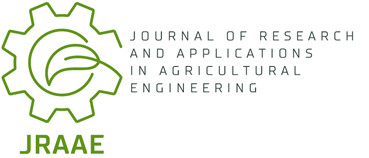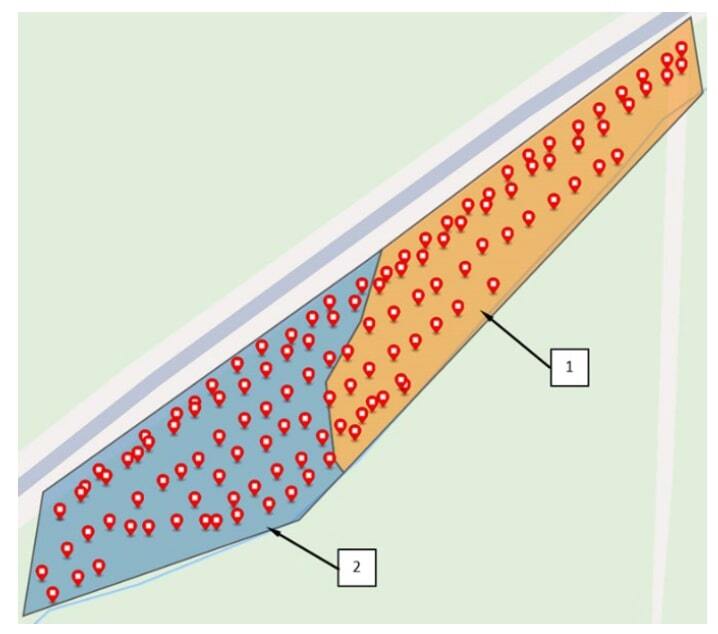Current issue
Online First
Archive
Instructions for Authors
Guide for Authors
Peer Review Policy
Research Ethics Policy
Ghostwriting and Guest Authorship
Copyright
Open Access Policy
Plagiarism
About the Journal
Aim and Scope
Scientific Board
Publisher
Editorial Board
Indexing in Databases
Personal Data Protection
Repository Policy
Contact
The potential of machine learning methods for the prediction of soil compaction
1
Wrocław University of Environmental and Life Sciences, Wrocław, Poland.
Submission date: 2024-12-06
Acceptance date: 2025-03-12
Online publication date: 2025-04-04
KEYWORDS
ABSTRACT
The practice of precision farming is contingent upon a comprehensive understanding of the spa-tial variability of a multitude of physical and chemical soil parameters. The acquisition of knowledge regarding soil parameters necessitates the undertaking of soil sampling and subsequent analysis, a process that is inherently labour-intensive and time-consuming. Consequently, preci-sion farming employs the identification of homogeneous field regions through the utilisation of scanning techniques, with the objective of ascertaining soil electrical characteristics, including electrical conductivity and magnetic susceptibility. The objective of this study was to attempt to predict soil compaction based on selected electrical parameters. In order to predict compaction, machine learning methods, namely decision tree and support vector regression were employed. The highest R-value of 0.87 was obtained for the decision tree model and soil layer 0.1-0.2 m for the training set. For the test set, the highest R-value of 0.85 was obtained for soil layer 0.1-0.2 m and the support vector regression model, which also had the lowest MAPE error value of 11.31%. The prediction of soil compaction using electrical soil parameters based on machine learning methods represents a promising avenue of research.
REFERENCES (18)
1.
Brevik EC., Fenton T.E., Lazari A.: Soil electrical conductivity as a function of soil water content and implications for soil mapping. Precision Agriculture, 2006, 7(6): 393-404.
2.
Che Othaman N.N., Md Isa M.N., Ismail R.C., Ahmad M.I., Hui C.K.: Factors that affect soil electrical conductivity (EC) based system for smart farming application. The 2nd International Conference on Applied Photonics and Elec-tronics 2019, 2020, 2203(1): 020055-1- 020055-6.
3.
Friedman SP.: Soil properties influencing apparent electrical conductivity: a review. Computers and Electronics in Agriculture, 2005, 46(1): 45-70.
4.
Hemmat A., Adamchuk VI.: Sensor systems for measuring soil compaction: Review and analysis. Computers and Electronics in Agriculture, 2008, 63(2): 89-103.
5.
Hiura T., Okada H., Terada C., Nakamura M., Kaneko N.: Effects of soil compaction on above-and belowground interactions during the early stage of forest development. Urban Forestry & Urban Greening, 2024, 102: 128565.
6.
Hoorman J., Moraes J.C., Reeder R.: The Biology of Soil Compaction. Agriculture and Natural Resources, 2009.
7.
Lipiec J., Usowicz B.: Temporal variability in water content, temperature, and electrical conductivity of sandy soil: Responses to soil-improving cropping systems (SICS). 2024, Soil and Tillage Research, 224: 106166.
8.
Mat Su AS., Adamchuk VI.: Temporal and operation-induced instability of apparent soil electrical conductivity measurements, Frontiers in Soil Science, 2023, 3: 1137731.
9.
Nawaz M., Bourrié G., Trolard, F.: Soil compaction impact and modeling. A review. Agronomy for Sustainable De-velopment, 2013, 33: 291-309.
10.
Pentoś K., Mbah J., Pieczarka K., Niedbała G., Wojciechowski T.: Evaluation of Multiple Linear Regression and Ma-chine Learning Approaches to Predict Soil Compaction and Shear Stress Based on Electrical Parameters. Applied Sciences, 2022, 12(17): 8791.
11.
Tekin AB., Yalçin H.: Design and development of a front-mounted on-the-go soil strength profile sensor. Turkish Journal of Agriculture and Forestry, 2019, 46(2): 151-163.
12.
Vrindts E., Mouazen A.M., Reyniers M., Maertens K., Maleki M.R., Ramon H., De Baerdemaeker J.: Management Zones based on Correlation between Soil Compaction Yield and Crop Data. Biosystems Engineering, 2005, 92(4): 419-428.
13.
Brogi C., Huisman J., Herbst M., Weihermüller L, Klosterhalfen A., Montzka C., Reichenau T. G., Vereecken H.: Simulation of spatial variability in crop leaf area index and yield using agroecosystem modeling and geophysics-based quantitative soil information. Vadose Zone Journal, 2020, 19(1):e20009.
14.
De Carlo L., Vivaldi G.A., Caputo M.C.: Electromagnetic induction measurements for investigating soil salinization caused by saline reclaimed water. Atmosphere, 2022, 13(1): 73.
15.
Pathirana S., Lambot S., Krishnapillai M., Cheema M., Smeaton C., Galagedara L.: Integrated ground-penetrating radar and electromagnetic induction offer a non-destructive approach to predict soil bulk density in boreal podzolic soil. Geoderma, 2024, 450: 117028.
16.
Romero-Ruiz A., O’Leary D., Daly E., Tuohy P., Milne A., Coleman K., Whitmore A. P.: An agrogeophysical mod-elling framework for the detection of soil compaction spatial variability due to grazing using field-scale electromag-netic induction data. Soil Use and Management, 2024, 40: e13039.
17.
Driba D.L., Emmanuel E.D., Doro K.O.: Predicting wetland soil properties using machine learning, geophysics, and soil measurement data. Journal of Soils and Sediments, 2024, 24: 2398–2415.
18.
Zeyliger A., Chinilin A., Ermolaeva O.: Spatial Interpolation of Gravimetric Soil Moisture Using EM38-mk Induction and Ensemble Machine Learning (Case Study from Dry Steppe Zone in Volgograd Region). Sensors, 2022, 22: 6153.
Share
RELATED ARTICLE
We process personal data collected when visiting the website. The function of obtaining information about users and their behavior is carried out by voluntarily entered information in forms and saving cookies in end devices. Data, including cookies, are used to provide services, improve the user experience and to analyze the traffic in accordance with the Privacy policy. Data are also collected and processed by Google Analytics tool (more).
You can change cookies settings in your browser. Restricted use of cookies in the browser configuration may affect some functionalities of the website.
You can change cookies settings in your browser. Restricted use of cookies in the browser configuration may affect some functionalities of the website.



